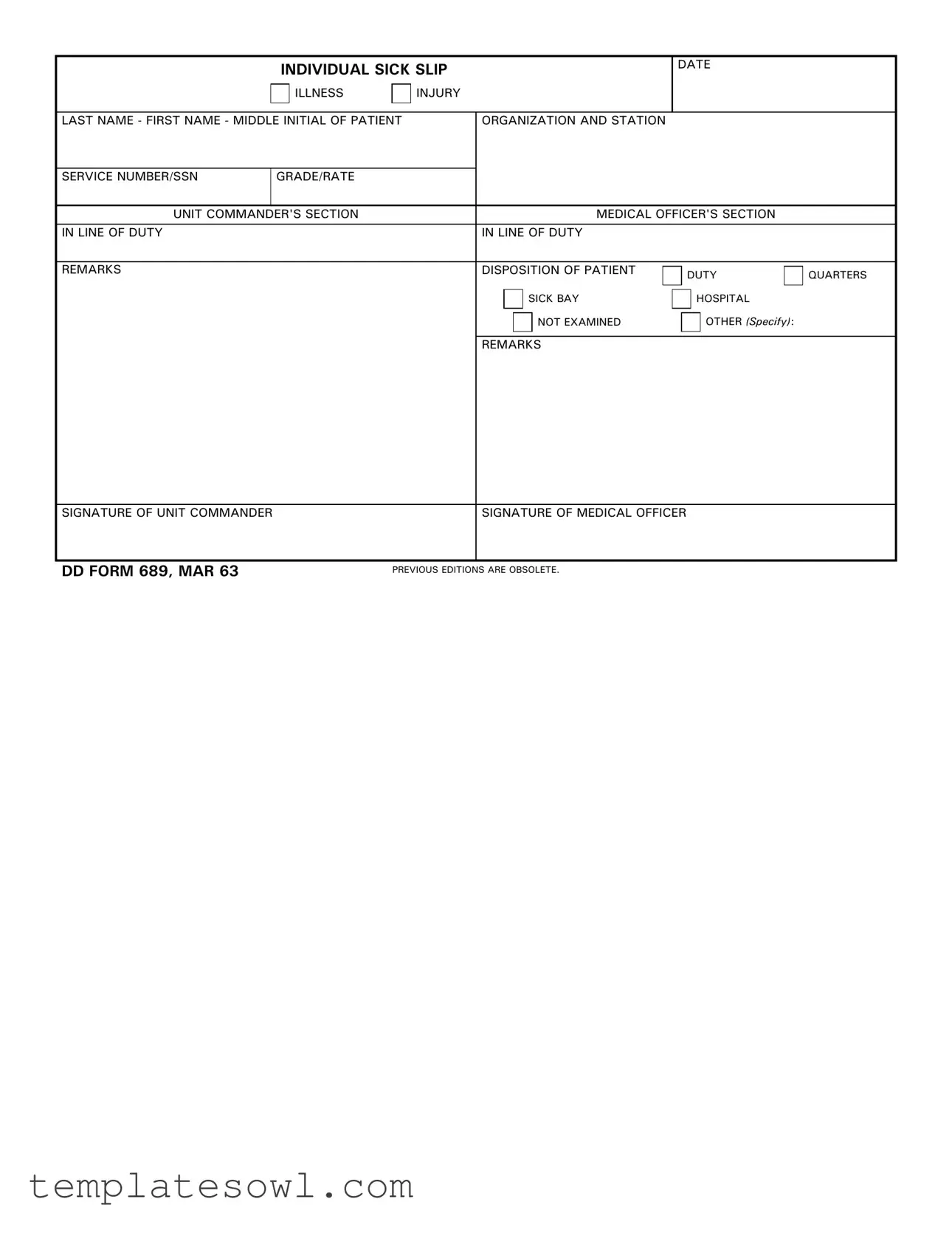What is the DD Form 689?
The DD Form 689, commonly referred to as the Individual Sick Slip, is a document used primarily by military personnel to report illnesses or injuries. It serves as an official notification for a service member's inability to perform their duties due to health issues.
Who is required to fill out the DD Form 689?
Service members who are unable to perform their duties due to a medical issue must fill out the DD Form 689. This applies to all branches of the military, and it is often completed by the individual affected or their attending medical officer.
What information is needed on the DD Form 689?
The form requires specific details, including the patient's last name, first name, middle initial, service number or Social Security Number, grade or rate, and the unit. Additionally, it asks for information regarding the nature of the illness or injury, the date on which the sick leave begins, and the disposition of the patient, such as whether they are resting at duty quarters, in a hospital, or have not been examined.
How do I obtain a DD Form 689?
The DD Form 689 can be obtained from a variety of sources, including military medical facilities, your unit's administrative office, or online through authorized military publications and resources. It is important to use the correct version of the form, as previous editions may no longer be valid.
Is the DD Form 689 a permanent record?
The DD Form 689 itself is not usually part of a service member's permanent medical record. However, it serves as an important temporary record. Depending on the circumstances, the information may be recorded in the patient's medical history by their healthcare provider.
What should be included in the remarks section of the DD Form 689?
The remarks section allows for additional notes that may be relevant to the patient's condition or treatment. Common entries might include specific instructions from the medical officer, any required follow-up appointments, or unique circumstances related to the illness or injury.
What happens after the DD Form 689 is submitted?
Once submitted, the form is reviewed by the unit commander and the medical officer. Appropriate actions are taken based on the information provided, which may include granting sick leave or providing further medical care. It is essential for service members to ensure that their absence is properly documented to avoid complications with their duty status.
Can a DD Form 689 be rescinded or modified?
Yes, the DD Form 689 can be modified or rescinded if circumstances change. If a service member's medical condition improves or worsens, the form can be updated to reflect the current status. This ensures that all relevant parties are informed and appropriate care is continued.
What should I do if my unit does not recognize the DD Form 689?
If there are concerns regarding the recognition or acceptance of the DD Form 689 within your unit, it is important to raise these issues with your immediate supervisor or unit administrative personnel. They can provide guidance or further clarification on the use of the form within your specific context.

